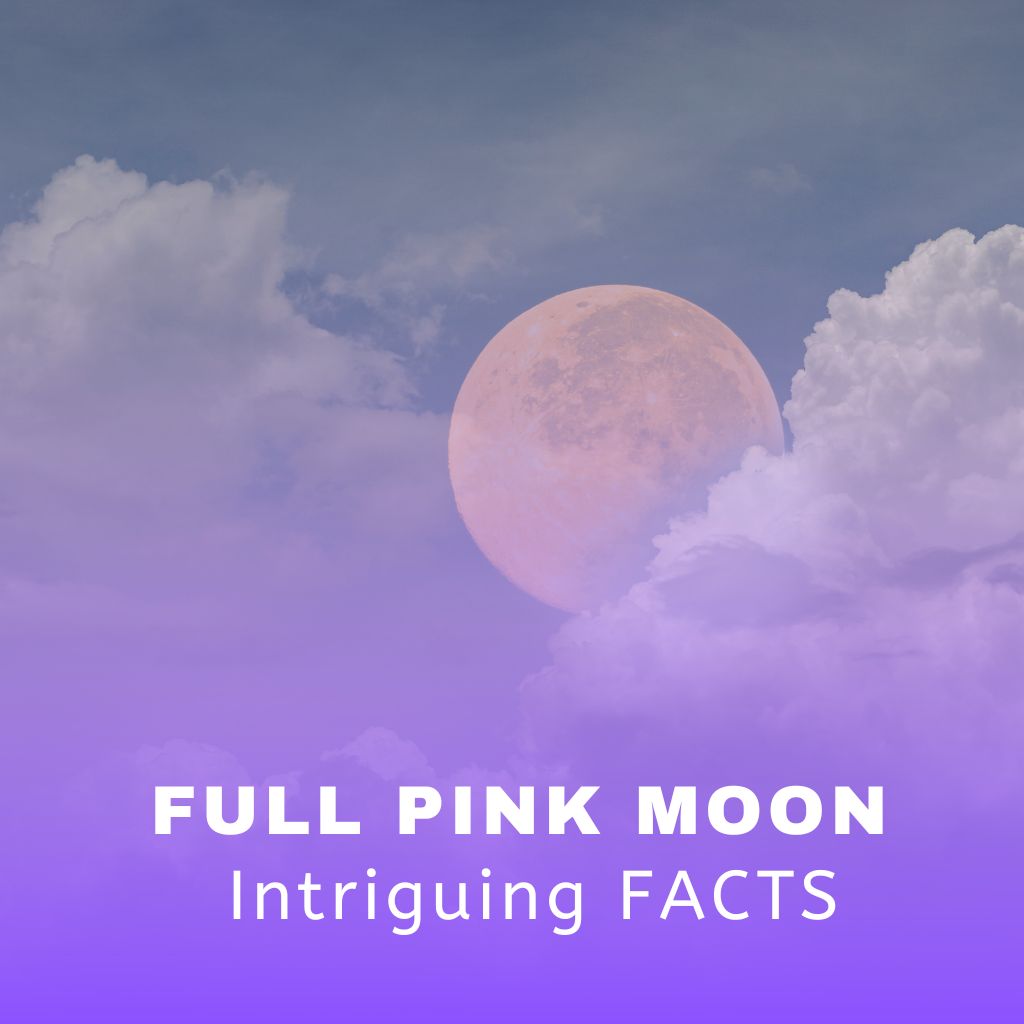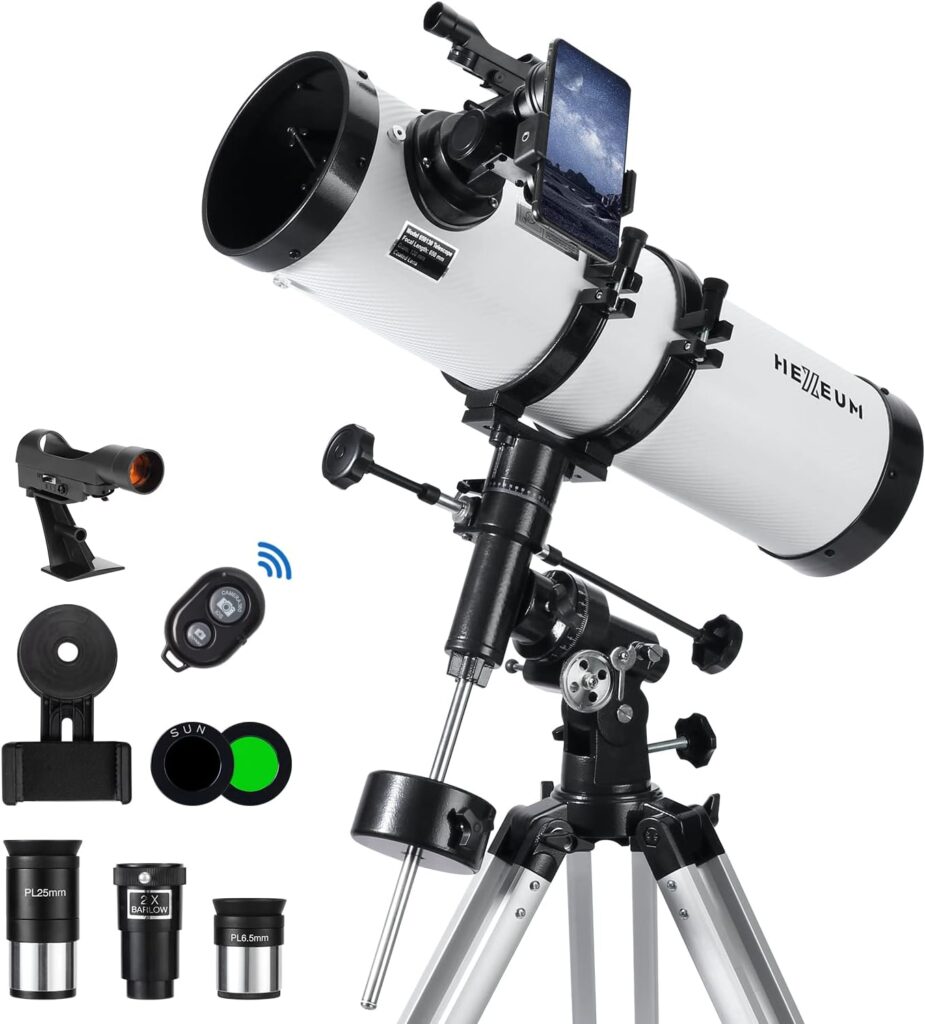This site contains affiliate links to products. I may receive a commission for purchases made through these links.
The Full Pink Moon, appearing each April, is named after the pink flowers that bloom this season, not its color. This event is significant worldwide, impacting cultures through traditions, agricultural practices, and spiritual beliefs. While universally signaling spring’s arrival, its influence varies, from guiding planting schedules to inspiring art and folklore.
This article explores how the Full Pink Moon shapes customs and practices globally, revealing our collective fascination with this springtime celestial phenomenon.
Fact 1: The Origin of Its Name
The “Pink Moon” gets its name not from a rosy hue cast across its surface, but from the pink phlox, a wildflower that blooms abundantly in North America during early spring. This naming convention is part of a broader tradition where full moons are named after seasonal changes or natural phenomena. Such names often reflect the landscape, wildlife, or agricultural cycles pertinent to the time of year, offering a way for cultures to mark the passage of time and changes in their environment.
This practice of naming moons after natural events serves as a bridge connecting human societies with the natural world, emphasizing the reliance on and respect for the cycles of nature. It underscores an intrinsic recognition of the moon’s influence on Earth’s rhythms, from tides to animal behaviors and plant growth. By aligning human activities with these lunar cycles, cultures worldwide demonstrate an ancient and ongoing dialogue with the universe, deeply rooted in observation and tradition.
The Pink Moon, with its ties to the vibrant emergence of spring flowers, symbolizes renewal, rebirth, and the interconnectedness of all living things within the natural world.
Fact 2: Agricultural Significance
Historically, the Full Pink Moon has served as a beacon for agricultural communities around the world, signaling the optimal time to begin planting crops. This lunar marker transcends geographical boundaries, with numerous cultures relying on its appearance to guide their agricultural practices. The timing of the Pink Moon often coincides with the thawing of the ground and the onset of warmer weather in many regions, making it an ideal period for sowing seeds.
In North America, indigenous tribes have long used the Pink Moon as a sign to start planting corn, squash, and beans—crops known as the “Three Sisters” in many Native American farming traditions. These crops are central to sustenance and are planted in a unique intercropping system that maximizes yield and soil health.
Across the Atlantic, in Europe, farmers historically took the Pink Moon as a cue to prepare fields for oats and barley, essential grains that form the backbone of local diets. The timing ensured that the crops would benefit from the spring rains, leading to a bountiful harvest in the late summer.
In parts of Asia, the Pink Moon’s appearance is closely watched by rice farmers. It marks the beginning of the rice-planting season, a critical period that sets the stage for the year’s main harvest. Communities often celebrate this time with festivals and rituals that seek blessings for a prosperous growing season.
The Full Pink Moon’s agricultural significance illustrates the deep connection between lunar cycles and farming practices. By aligning their activities with the moon’s phases, farmers harness the rhythm of nature to optimize their efforts, a testament to the enduring relationship between humanity and the celestial world.
Fact 3: Spiritual and Mythological Connections
The Full Pink Moon holds a rich tapestry of spiritual significance and mythological connections across different cultures, emphasizing its role in symbolizing renewal, fertility, and rebirth. This moon phase often coincides with festivals and rituals that celebrate the spring season’s life-giving qualities and the earth’s awakening from winter’s slumber.
In many indigenous cultures, the Full Pink Moon is seen as a time of cleansing and renewal. Rituals are performed to clear away the old and make way for new growth and beginnings. For example, some Native American tribes conduct ceremonies to honor the moon and its connection to the natural cycles of birth and regeneration, seeing it as a time to plant seeds not only in the ground but in the spirit for future harvests.
In Europe, myths and legends often associated the Full Pink Moon with the goddesses of fertility and spring, such as Eostre, from whom the term “Easter” is derived. The moon’s appearance heralds the rebirth of the land and is celebrated with various customs and traditions that include egg symbolism and the bunny, both representing fertility and new life.
In Asia, the Pink Moon’s arrival is intertwined with legends of deities that oversee growth, prosperity, and health. Festivals around this time focus on family, community, and the honoring of ancestors, with the moon playing a central role in rituals that ask for good fortune and a prosperous year ahead.
These spiritual and mythological connections highlight the Full Pink Moon’s universal appeal and its ability to bring communities together in celebration of life’s cyclical nature. The common themes of rebirth, renewal, and gratitude for the earth’s abundance reflect a global appreciation for the interdependence of life and the natural world.
Fact 4: The Pink Moon in Astrology
The Full Pink Moon occupies a significant place in astrology, where it’s believed to exert a powerful influence on personal growth, emotional well-being, and the unveiling of hidden truths. Astrologers view the Full Pink Moon as a time when the veil between the physical and spiritual worlds thins, offering clarity and insight into one’s path.
In astrology, the Full Moon represents culmination and fruition; it’s a period when the seeds of intention planted during the New Moon begin to manifest. The Pink Moon, occurring in the dynamic and initiating sign of Aries or the grounding and sensual sign of Taurus, depending on the year, encourages individuals to embrace change, assert independence, or seek comfort and stability.
For those born under the sign of Aries, the Pink Moon often heralds a period of self-discovery and renewed vigor towards personal goals. Taurus individuals, on the other hand, might find this time ideal for focusing on self-care, pleasure, and the beautification of their surroundings, aligning with the earthy nature of their sign.
The astrological significance of the Pink Moon extends to relationships and social interactions. It’s a time when emotions run high, and the desire for connection and understanding comes to the forefront. Astrologers advise paying attention to interpersonal dynamics during this lunar phase, as it can illuminate areas needing balance or healing.
Moreover, the Full Pink Moon is seen as a catalyst for releasing what no longer serves us, making way for new beginnings and opportunities. Whether it’s letting go of outdated beliefs, habits, or relationships, this moon phase provides the momentum necessary for significant personal transformation.
Astrology teaches that by tuning into the energy of the Full Pink Moon, individuals can navigate their lives with greater awareness and intention, using this time to align more closely with their true selves and the natural cycles of the universe.
Fact 5: Artistic Inspiration
The Full Pink Moon has long served as a muse for artists, poets, and musicians, drawn to its beauty and the symbolism of renewal and mystery it carries. This celestial event, transcending mere astronomical interest, has been immortalized in various forms of art, capturing the human fascination with the moon and its phases.
In literature, the Pink Moon has been a recurrent motif, symbolizing the ephemeral nature of beauty and life itself. Poets have often used the imagery of the Full Pink Moon to convey themes of longing, change, and the passage of time, tapping into the deep emotional resonance that the moon evokes in the human psyche.
Visual arts, too, have been significantly influenced by the Pink Moon. Painters have attempted to capture its subtle glow and the serene landscape it illuminates, often imbuing their works with a sense of calm and introspection. The ethereal light of the Pink Moon challenges artists to convey not just the visual spectacle but the emotional and spiritual ambiance it creates.
In music, the Full Pink Moon inspires compositions that range from tranquil and meditative to powerful and transformative. Musicians and songwriters draw on its imagery to explore themes of love, renewal, and the cyclical nature of life, using the moon as a backdrop for stories of personal growth and connection.
The impact of the Pink Moon on creativity extends to digital arts and photography, where modern technology allows artists to capture and manipulate images of the moon in innovative ways. From stunning photographs that highlight its detailed surface and luminous presence to digital creations that reimagine the moon in fantastical settings, the Pink Moon continues to spark the imagination of creators around the world.
This artistic fascination with the Full Pink Moon underscores the profound connection between celestial phenomena and human creativity. It reflects a collective desire to explore and express the mysteries of the universe and our place within it, reminding us of the enduring power of the natural world to inspire and transform.
Fact 6: Modern Celebrations and Observations
In contemporary times, the Full Pink Moon continues to be celebrated and observed in various ways around the world, blending ancient traditions with modern practices and technologies. Communities come together to honor this celestial event, fostering a sense of connection and wonder under the night sky.
One modern manifestation of Pink Moon celebrations is through organized moonwatching events held by astronomy clubs, nature centers, and observatories. These gatherings provide opportunities for people of all ages to observe the Full Pink Moon through telescopes, binoculars, or even just with the naked eye. Guided by experts, participants learn about lunar features and astronomical phenomena while sharing the experience with fellow enthusiasts.
Social media platforms have also become avenues for sharing the beauty and significance of the Full Pink Moon. Amateur astronomers and photographers capture stunning images of the moon and share them online, allowing people around the world to marvel at its splendor and discuss its symbolism in real-time. Hashtags like #FullPinkMoon and #PinkMoonNight further amplify the visibility of this celestial event in the digital realm.
In addition to organized events and online sharing, many individuals and families observe the Full Pink Moon in more personal ways. Some may gather with loved ones for moonlit picnics or stargazing sessions, using the occasion to connect with nature and each other. Others may engage in rituals or practices that honor the Pink Moon’s themes of renewal and growth, such as journaling, meditation, or setting intentions for the coming lunar cycle.
The modern celebrations and observations surrounding the Full Pink Moon highlight the enduring relevance of this celestial event in contemporary society. Whether through scientific exploration, artistic expression, or communal gatherings, people continue to find meaning and inspiration in the luminous presence of the Pink Moon, reaffirming its status as a cherished symbol of unity and wonder in our ever-changing world.
The Full Pink Moon will rise on the night of April 23, 2024
From its humble origins in the blooming of pink phlox to its role as a beacon for agricultural practices and spiritual beliefs, the Full Pink Moon has woven itself into the fabric of human experience across time and geography.
Through traditions, rituals, and artistic expressions, communities around the world celebrate the Pink Moon as a symbol of renewal, growth, and interconnectedness with the natural world. Its universal appeal speaks to our shared fascination with the rhythms of the cosmos and our desire to find meaning and connection in the mysteries of the universe.
Dive deeper into the cosmos! 🌍 Sign up for Cosmic Journey to receive curated astronomy content and tips.











